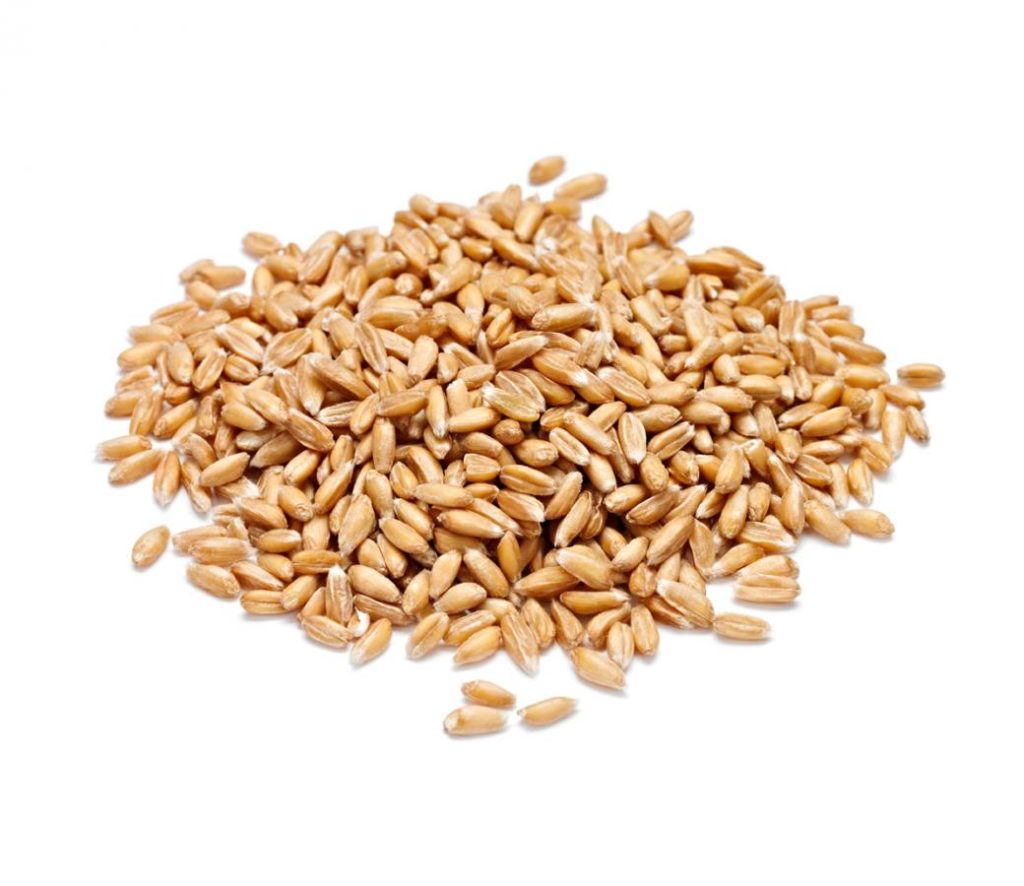Ancient Grains
Whole wheat, brown rice, oats…you already know these can be part of a balanced diet, but what about ancient grains, AKA their grainy grandparents?
Filled with vitamins, minerals, and fiber, they’ve been cultivated for a long time (for good reason) and many of them have specific health benefits, provide energy, and promote satiety.
RELATED: The benefits of fiber
Plus, broadening your grain horizons is great for your palate. Ancient grains tend to have a nutty taste and have a slightly chewier texture, but each is slightly different. Translation: you’ll never get sick of veggie-grain bowls if you can keep switching up the base.
Here’s what you need to know about the most popular (there are many more!) ancient grains.
Ancient Grains, Explained

Amaranth
Amaranth had a long history in Mexico and Peru and was a major crop for the Aztecs. Some say it was domesticated as far back as 6,000 to 8,000 years ago. It’s actually the seed of a broad-leafed flowering plant, but its nutrition profile means it’s classified as a grain. It’s a great source of protein and is higher in lysine, cysteine, and methionine—essential amino acids required for cell and brain maintenance—than other grains. It’s also rich in calcium, magnesium, and iron and is gluten-free. One popular way to enjoy it? As a breakfast porridge, like in this recipe from Nutrition Stripped.

Buckwheat
Indigenous to Central Asia where it still grows wild, buckwheat has also been providing fibrous nutrition to humans for up to 8,000 years and like amaranth, is actually a seed that’s classified as a grain. Don’t let it’s name fool you: it’s not wheat and is in fact gluten-free. It’s one of the best sources of protein in the grain world (23g per cup!) and is high in flavonoids that act as antioxidants. Buckwheat has also been linked to lowered risk of developing high cholesterol and high blood pressure and contains magnesium, which helps improve circulation and overall cardiovascular health. Soba noodles are made with buckwheat and are a delicious way to enjoy it, topped with stir-fried veggies.
TRY THIS RECIPE: Shrimp Soba Noodles

Farro
A centuries-old staple in Mediterranean countries like Italy, farro is a form of wheat. It’s a great source of protein and essential vitamins and minerals and is also lower in calories than brown rice and quinoa, while higher in fiber. Farro is dense and chewy and is a great nutrient-rich substitute for rice in dishes like risotto.
TRY THIS RECIPE: Broccoli Rabe and Farro Stuffed Mushroom

Freekeh
Freekeh has been popular for centuries in countries like Syria, Lebanon, and Egypt. Here’s the thing: it’s not the name of a plant; it’s the result of a process. Green durum wheat is picked before it’s mature (hence the green color), and then it’s roasted, rubbed, and dried, creating freekeh, a rice-sized flavorful grain. It’s a good source of protein and fiber and contains vitamins like A, C, and E, plus potassium, magnesium and calcium. Since it’s roasted, it also comes with a smokiness compared to other grains.

Millet
The smallest of all grains, millet is thought to have originated in Asia and Africa thousands of years ago before spreading around the world. (Fun fact: It’s mentioned in the Old Testament!) It’s not as high in fiber or protein as some of the other gluten-free grains, but it does provide some of each and is a great source of micronutrients like magnesium and manganese. It also has a much lighter, airier texture than denser grains like farro and sorghum, so if you like a little less chewiness, it’s a good option.

Quinoa
Quinoa (the wellness world’s fave!) is a plant that originated in Peru and Bolivia and was used by many ancient civilizations in South America. It’s gluten-free and high in fiber and protein, providing all nine essential amino acids (a rare feat in the plant world). It’s also rich in iron, B vitamins, zinc, and calcium. The best part? Quinoa is probably the easiest grain (well, it’s another seed, actually, that’s classified as a grain) to cook and its neutral flavor means it works as a base for almost any meal.
TRY THIS RECIPE: Quinoa Granola

Sorghum
Sorghum originally came from northeastern Africa and is now widely cultivated in the US, ever since Ben Franklin mentioned its powers in 1757. The gluten-free grain has been linked to diabetes prevention and contains compounds that may inhibit the growth of tumor cells. It also has more antioxidants than other grains. It has a hearty, nutty flavor and bigger kernels that are closer to the texture of farro than quinoa.

Spelt
An ancient cousin to modern wheat, Spelt was one of the first grains to be grown by early farmers as far back as 5,000 BC. It comes with a rich sienna color and nutty flavor. The fiber found in spelt is linked to the prevention of heart disease and diabetes, reduced LDL cholesterol, and reduced breast cancer risk. Spelt is also an excellent source of vitamin B2, manganese, thiamin, and copper.
A final ancient grain pro tip to take away? Cook your grains in vegetable broth instead of water for extra flavor and micronutrients.


